The Visual Guide to
Bovine Reproduction
- Normal Calving
- Multiple Births
- Calving Facilities
- Pelvic Dimensions
- Calving Problems
- True Breech
- Sizing the Fetus
- Calving Injuries
- Cesarean Section
- Fetotomy
- Pelvic Splitting
- Episiotomy
Obstetrics: Calving Injuries
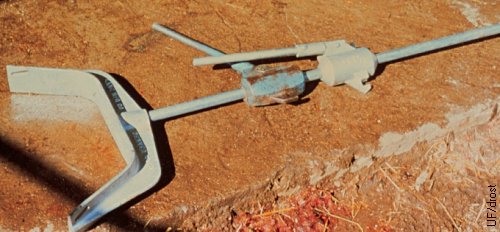
Calf Puller.
Calf pullers, or fetal extractors, are mechanical devices used to deliver calves when sufficient human help is not available. They are inherently dangerous to the calf and the dam because of the excessive force they can exert. They should only be used when it has first been determined that 1) there is sufficient room in the birth canal; 2) the calf is lined up correctly; and 3) there is ample lubrication.
Drost M (1974)
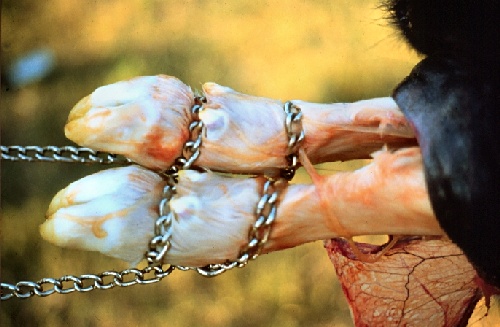
Chain Placement.
The preferred placement of the obstetrical chain is with the loop below (distal to) the dew claws and the large link on the dorsal aspect of the foot. When the chain is relaxed it sometimes falls off. Therefore some users prefer to place the chain above the pastern joint. When only placed above or proximal to the pastern, too much force is placed on the metacarpal or metatarsal bone, which can lead to fractures. A compromised application is shown in this illustration, where the actual force of the pull is placed on the distal portion of the foot.
Drost M (1978)
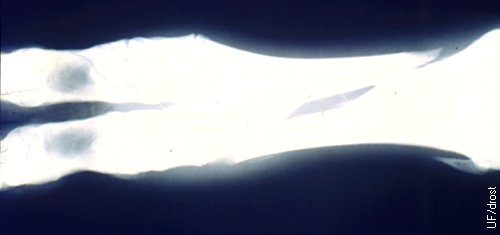
Oblique Fracture of the Metacarpus.
This oblique fracture was the result of injudicious placement of the obstetrical chain, above the pastern, plus excessive force during delivery.
Utrecht (1976)
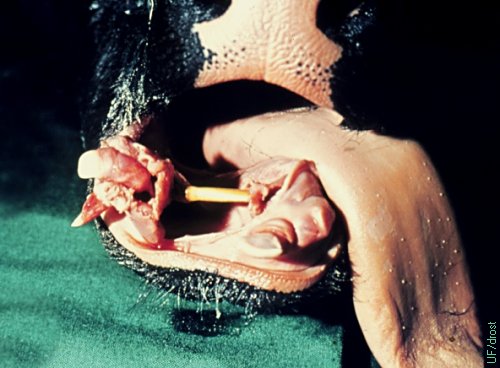
Fractured Mandible.
Hooks or chains should never be applied to the mandible for any kind of traction. (A small horizontal yellow peg is placed between the severed halves of the mandible to show the fracture).
Utrecht (1976)
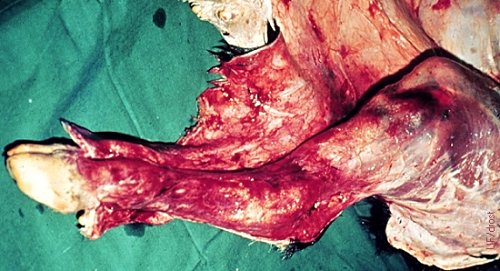
Subcutaneous Bruising.
The skin has been laid back from this hindlimb to show the amount of bruising inflicted on this calf that was delivered per vaginam with the pull of two men. The calf was still alive during the delivery.
Utrecht (1976)
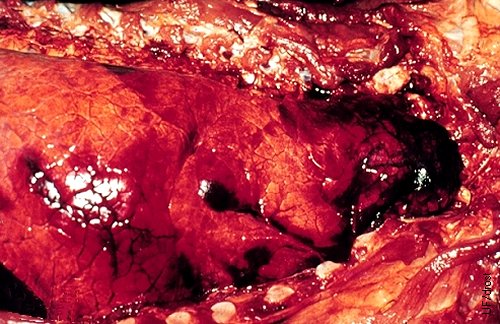
Bruised Lungs.
The rib cage has been opened to show the amount of bruising and hemorrhage in the lungs of this calf that was delivered per vaginam with the pull of two men, while the calf was still alive.
Utrecht (1976)
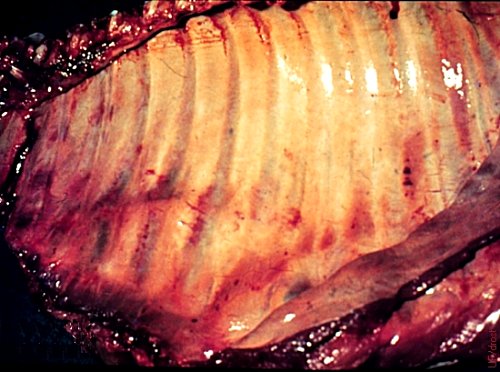
Fractured Ribs.
These ribs were fractured during delivery when the calf was pulled by two men. Generally, when more than three ribs are fractured the calf will not survive due to its reluctance to breathe and expand its chest.
Utrecht (1976)
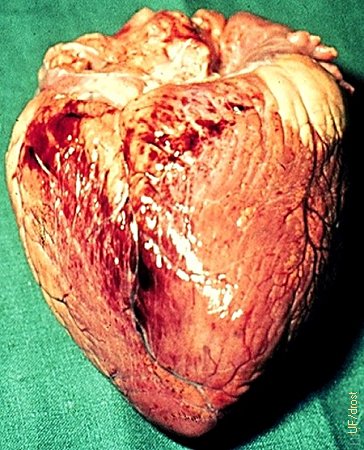
Bruised Heart.
This neonatal heart shows bruises and ecchymotic hemorrhages as a result of the forced extraction per vaginam with the force of two men, while the calf was still alive.
Utrecht (1976)
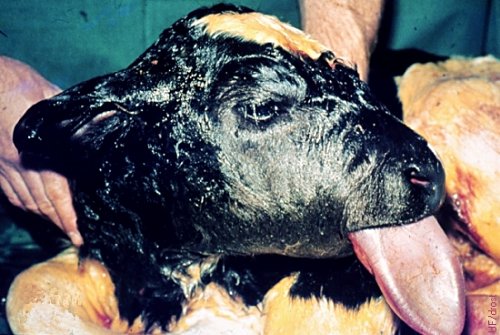
Swollen Head and Tongue.
Occasionally when the head of a live calf becomes wedged in the birth canal for a prolonged period of time, the jugular veins are compressed while the carotid arteries continue to pump blood to the head. The result is venous congestion resulting in a swollen head and tongue.
Utrecht (1976)
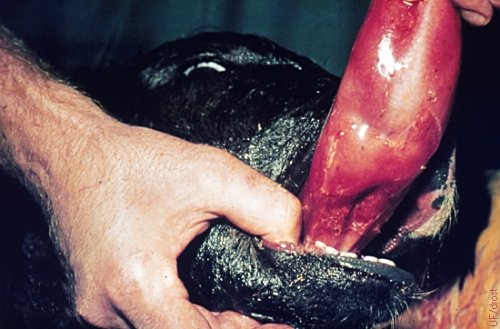
Laceration of Swollen Tongue.
The erupted incisor teeth are very sharp and will lacerate the ventral aspect of the tongue when it is swollen. These calves have difficulty nursing and should be fed with an esophageal feeding tube.
Utrecht (1976)
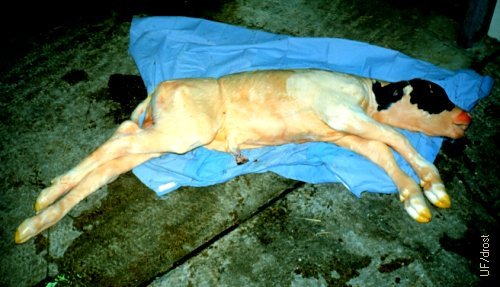
Long Umbilical Cord.
The umbilical of this calf was wrapped in a half-hitch around the lower abdomen. The calf died in utero due to occlusion of the cord.
Drost M (1982)
